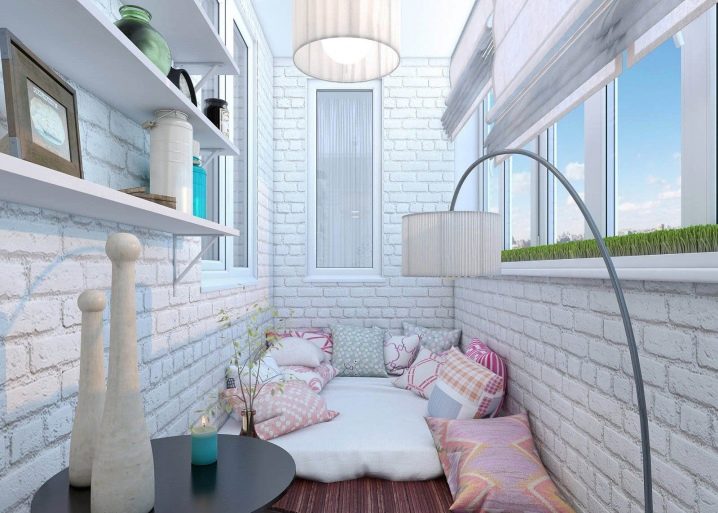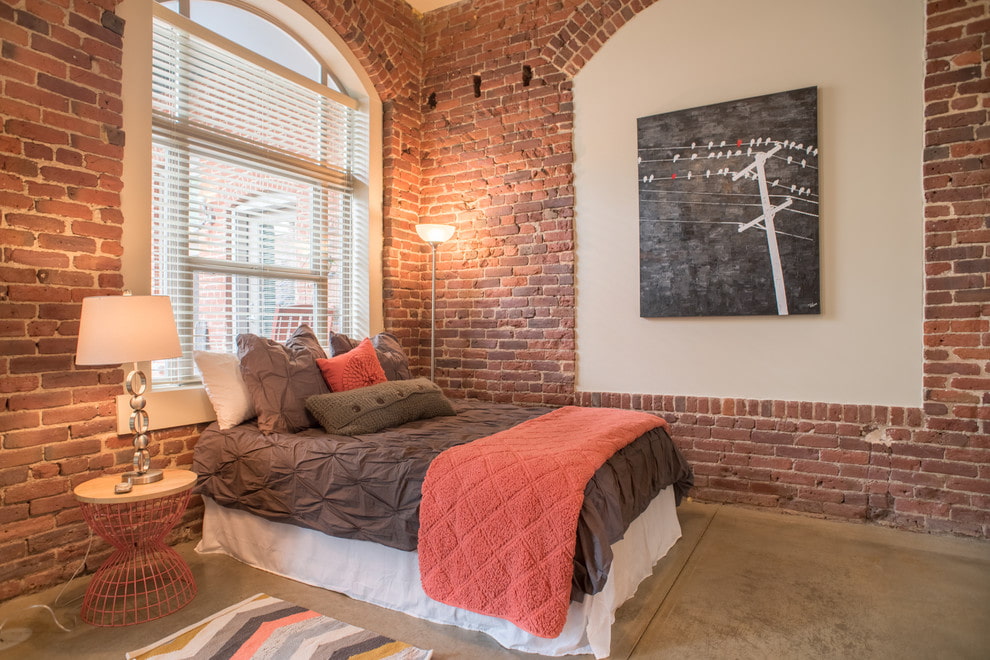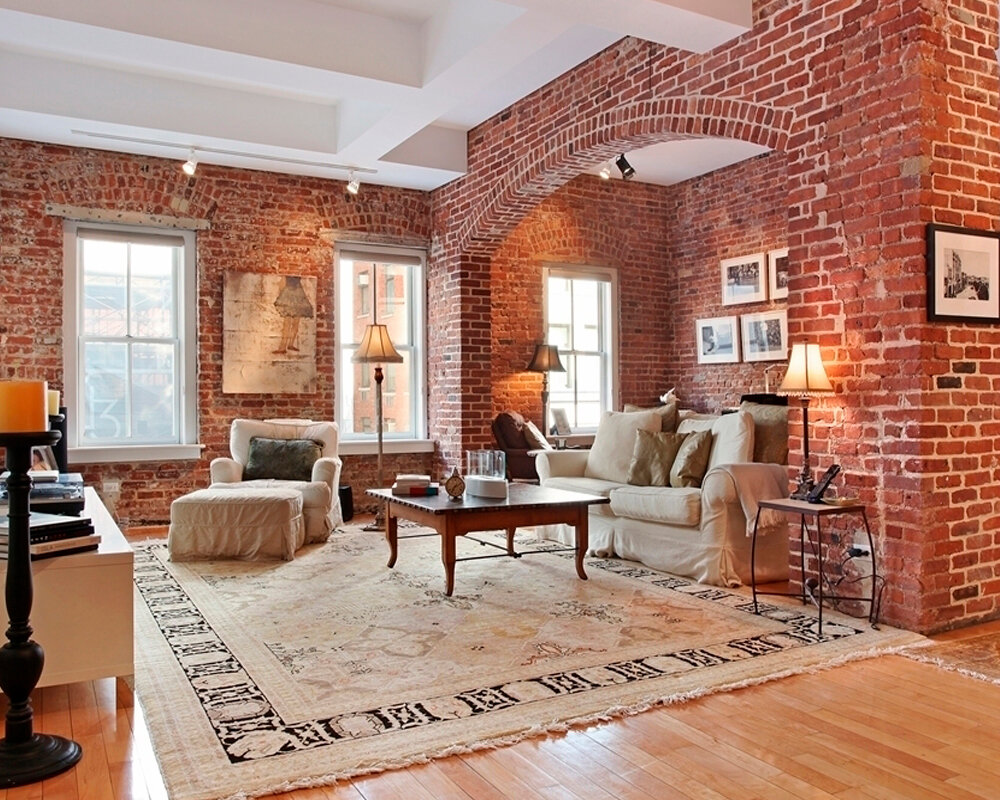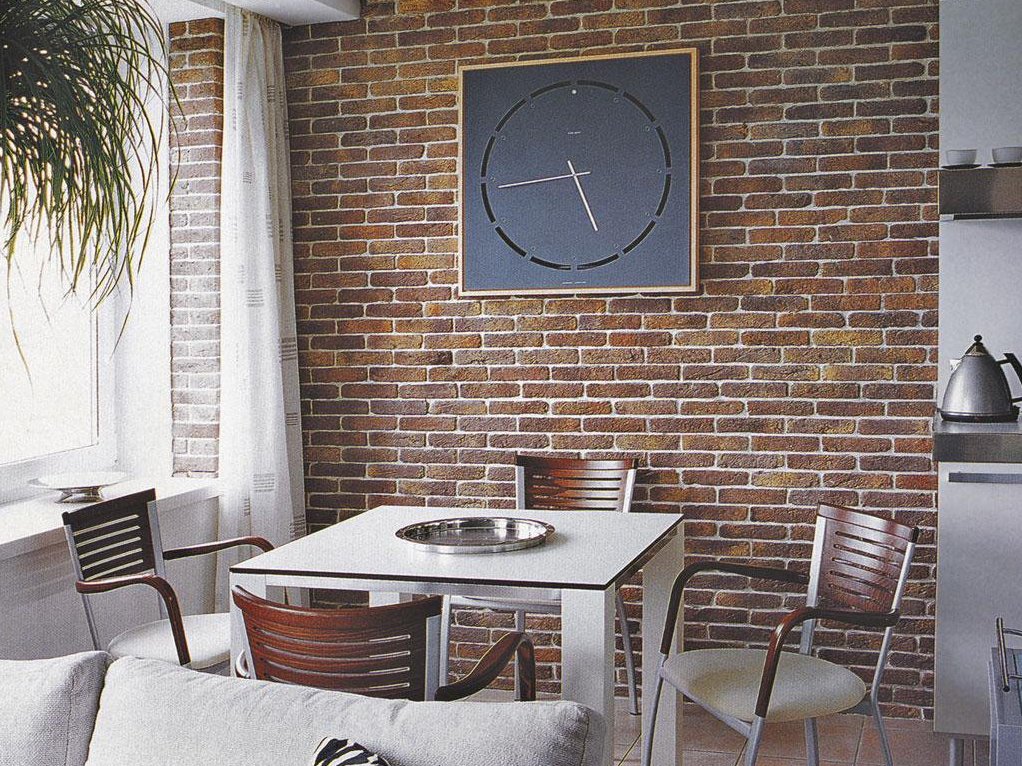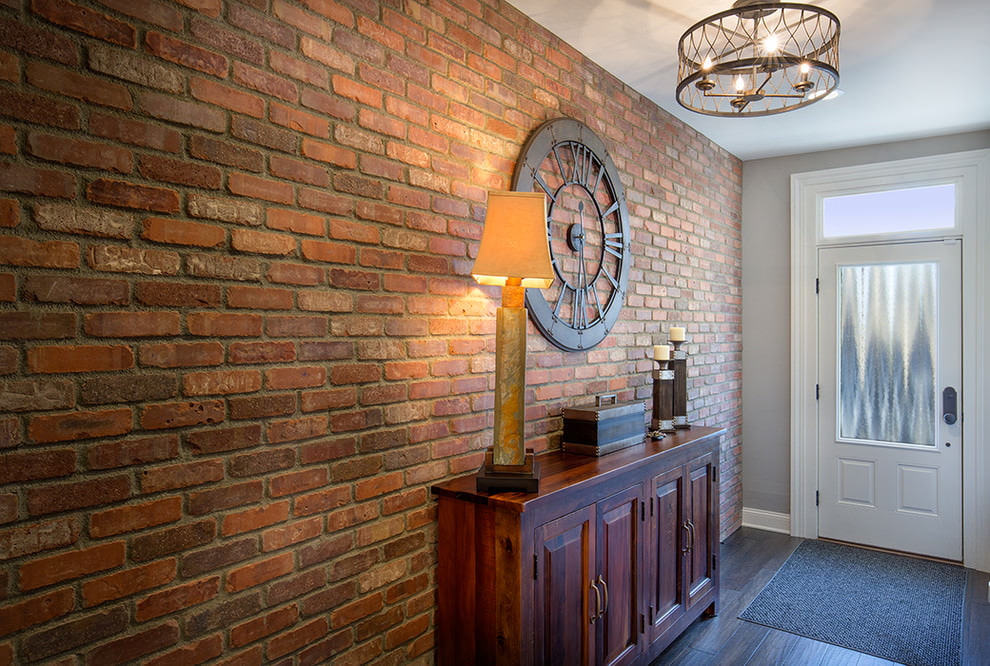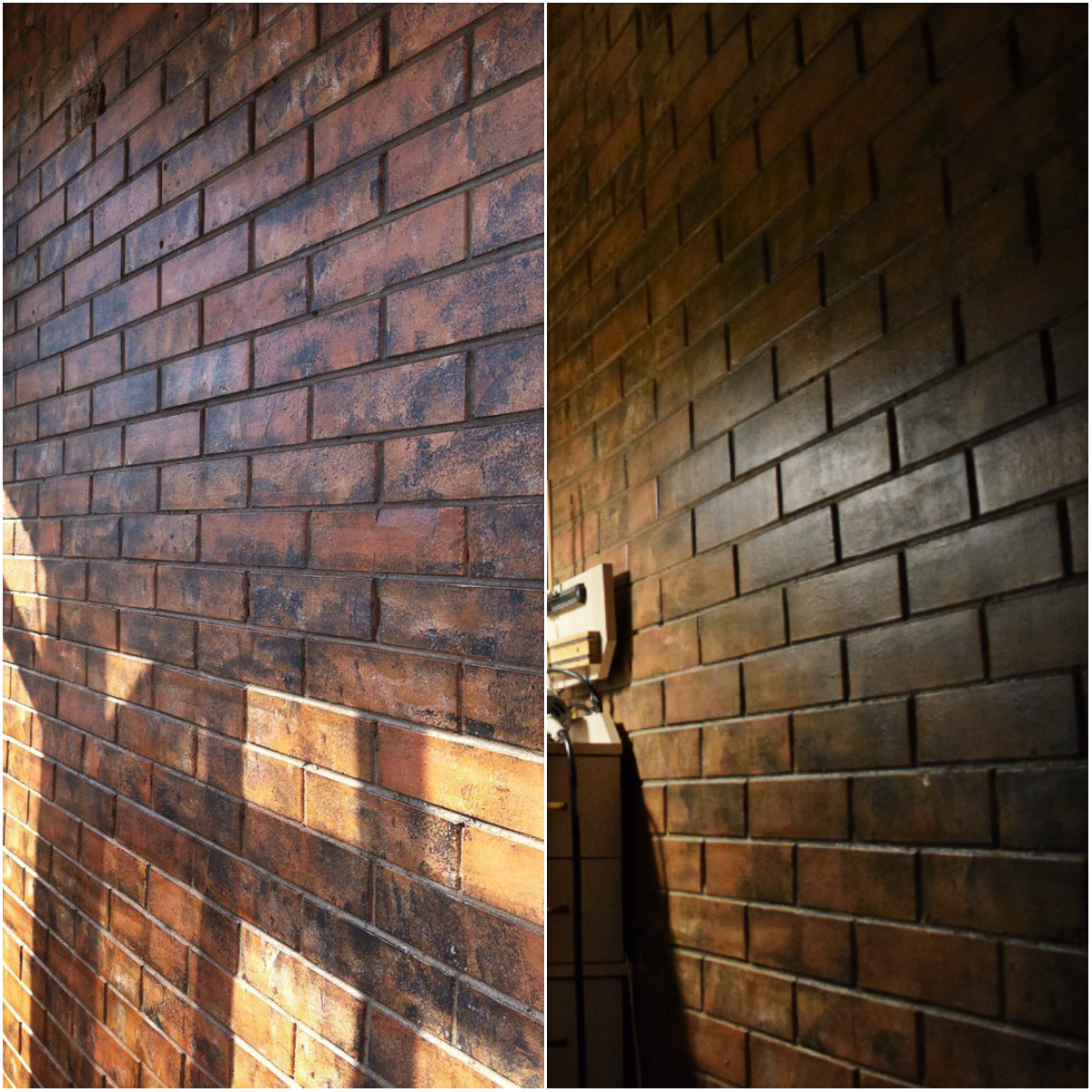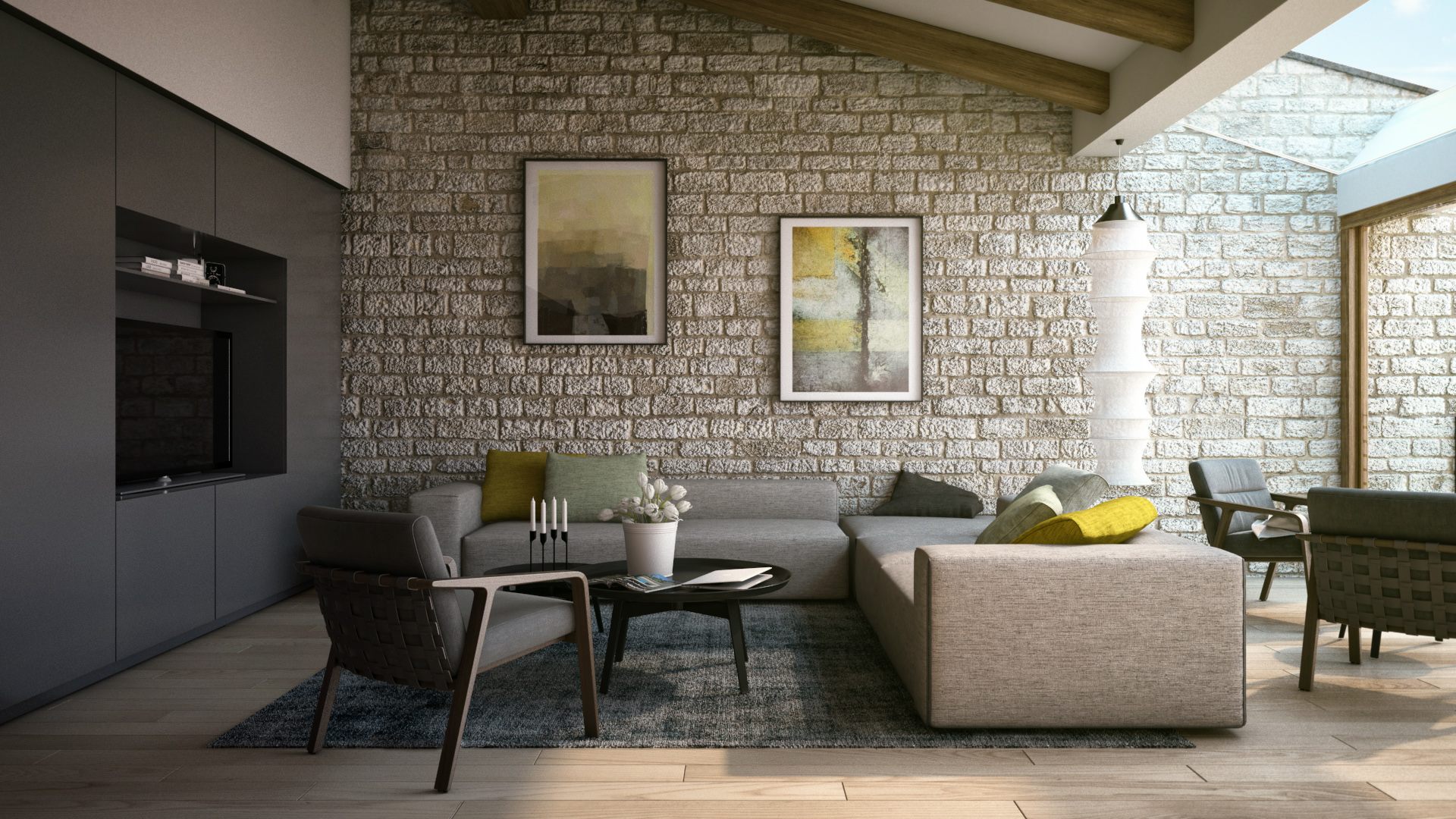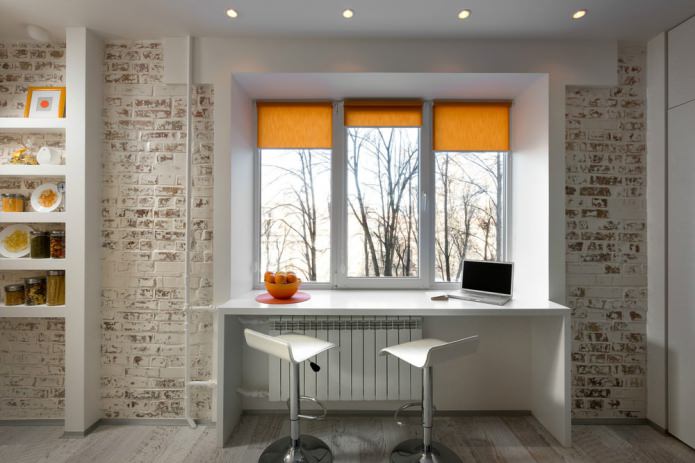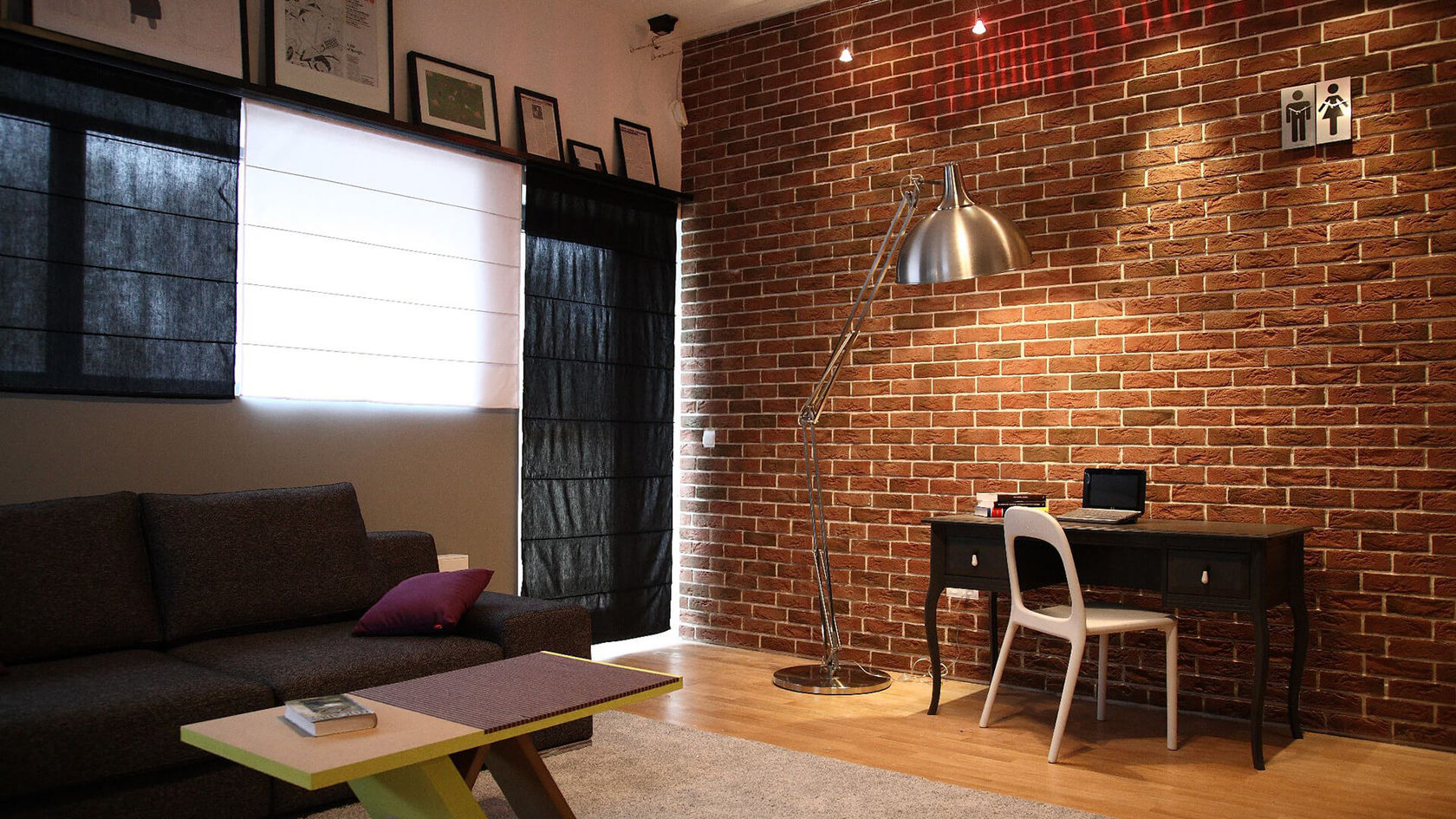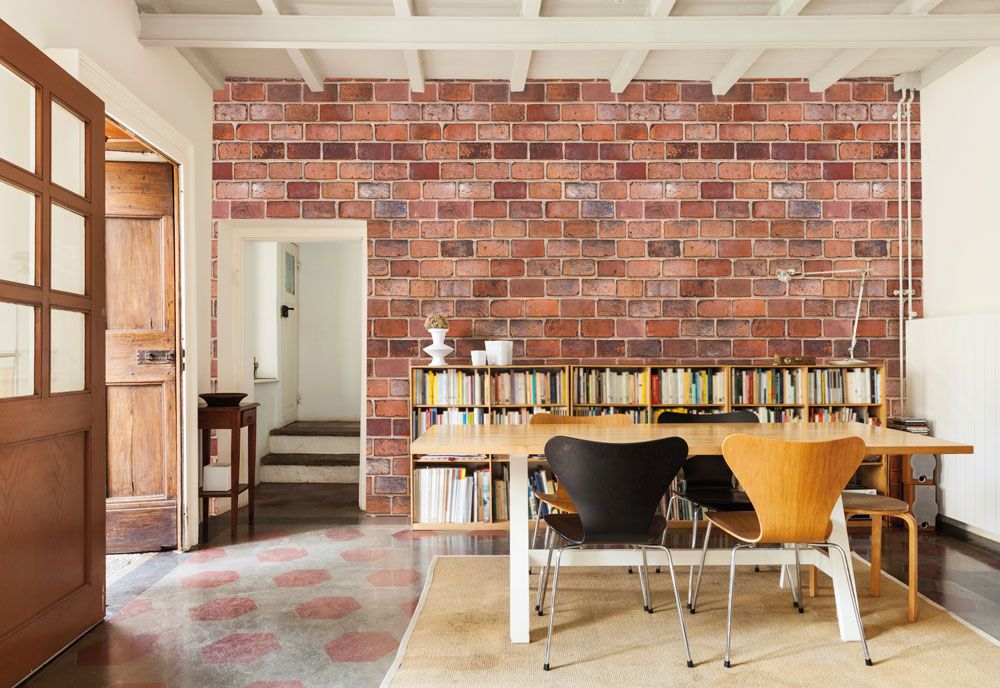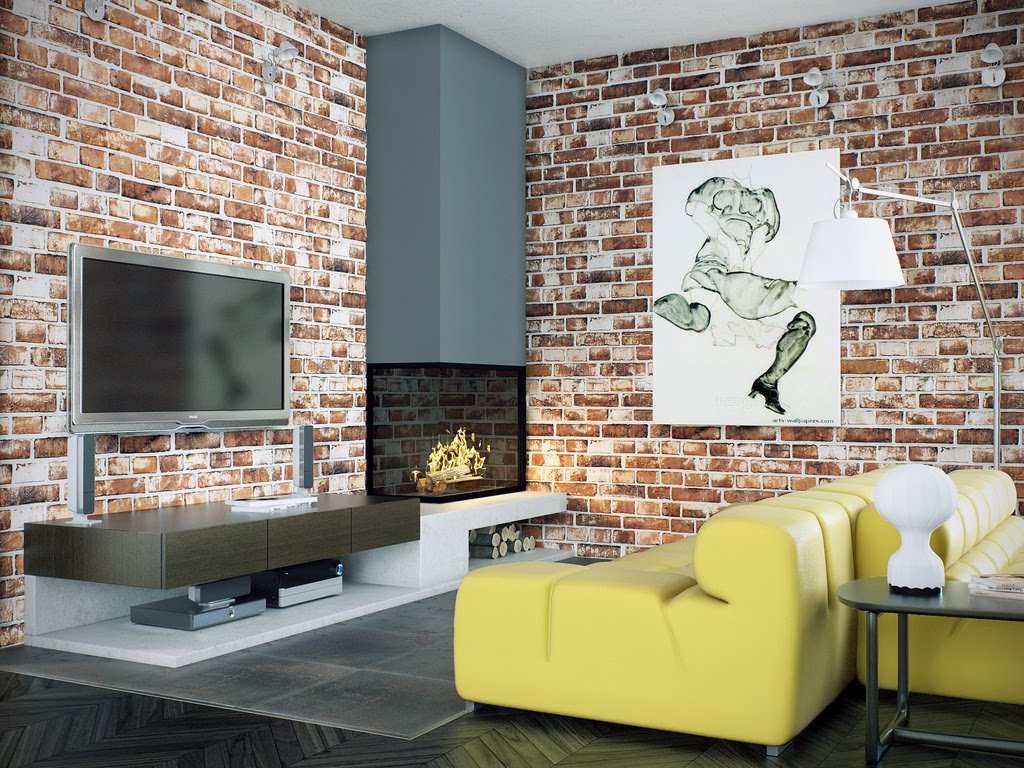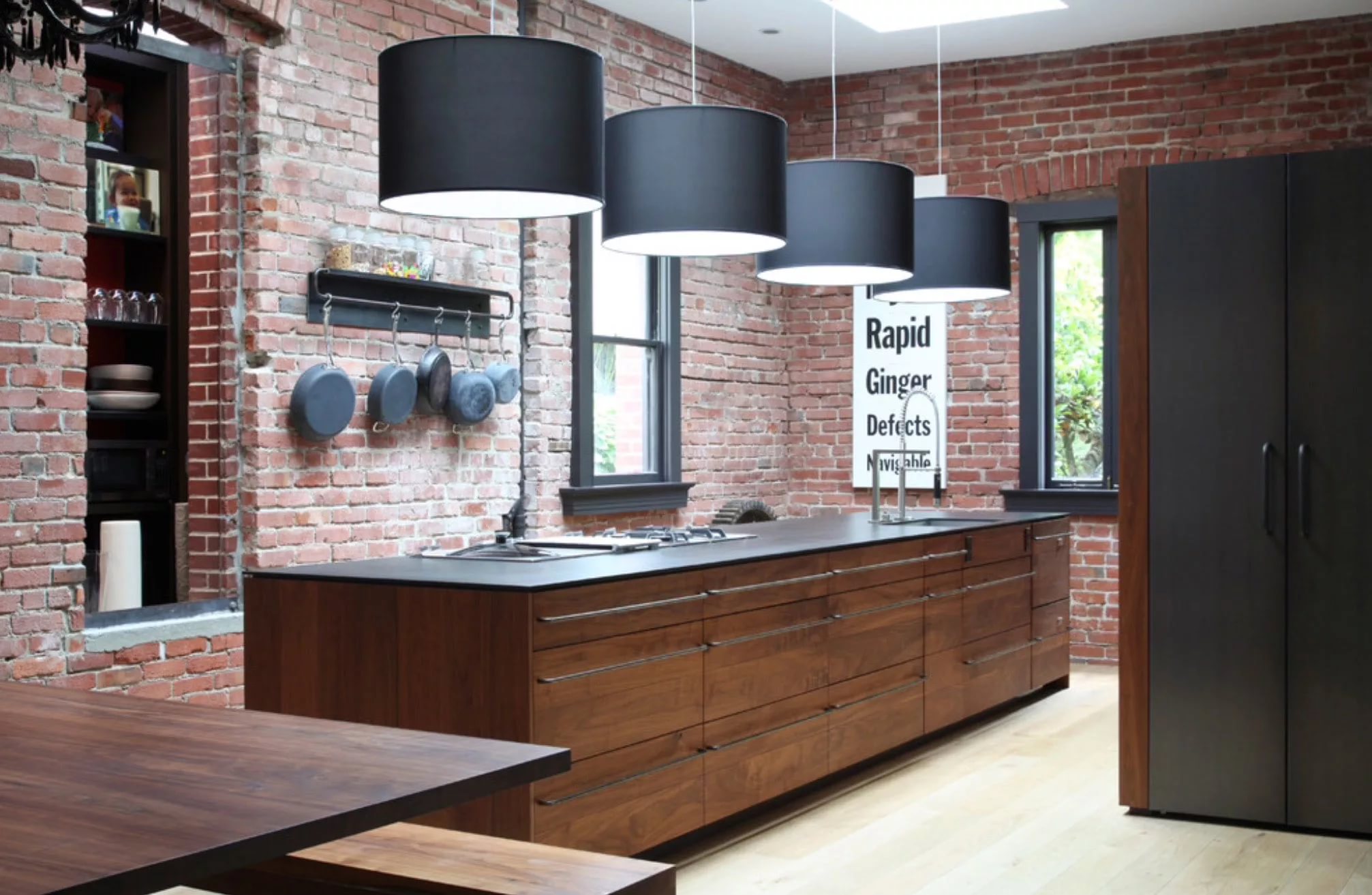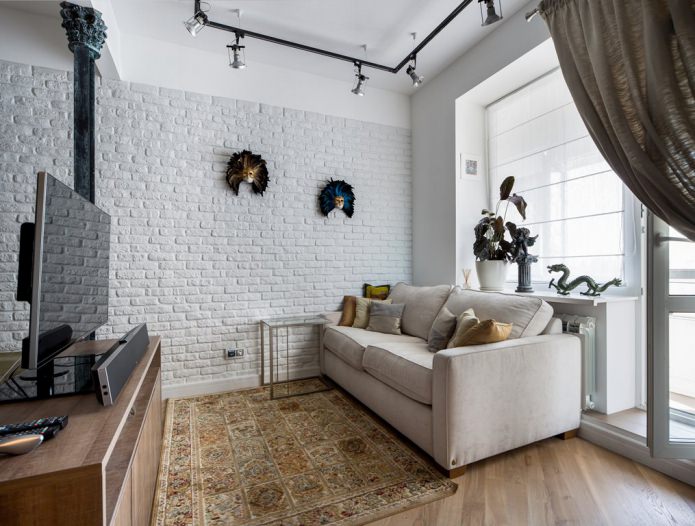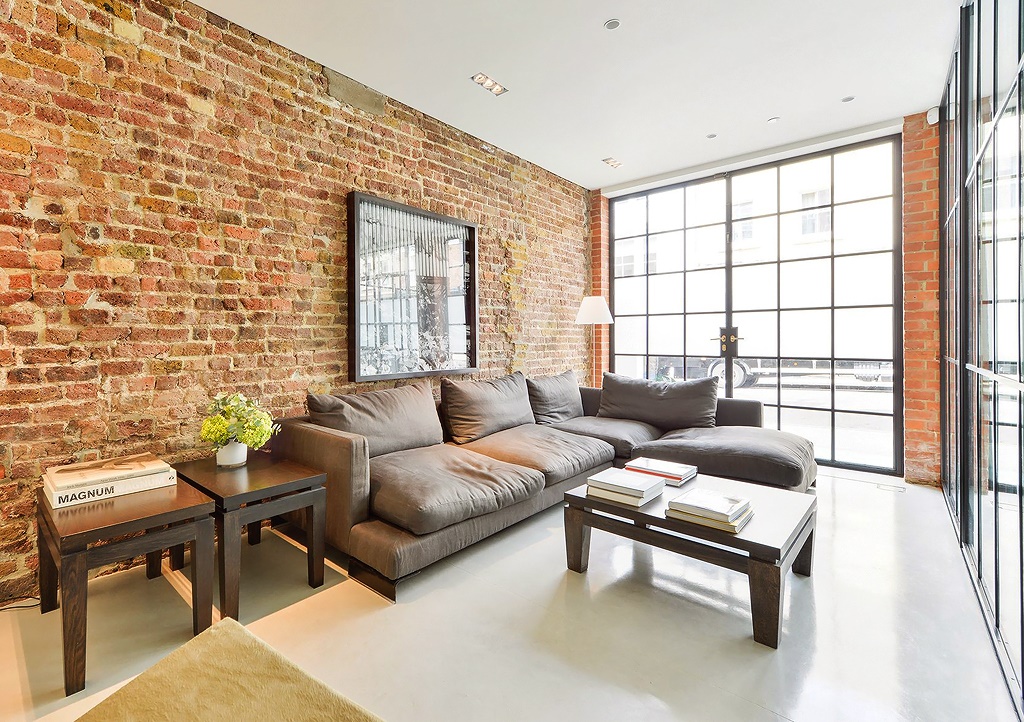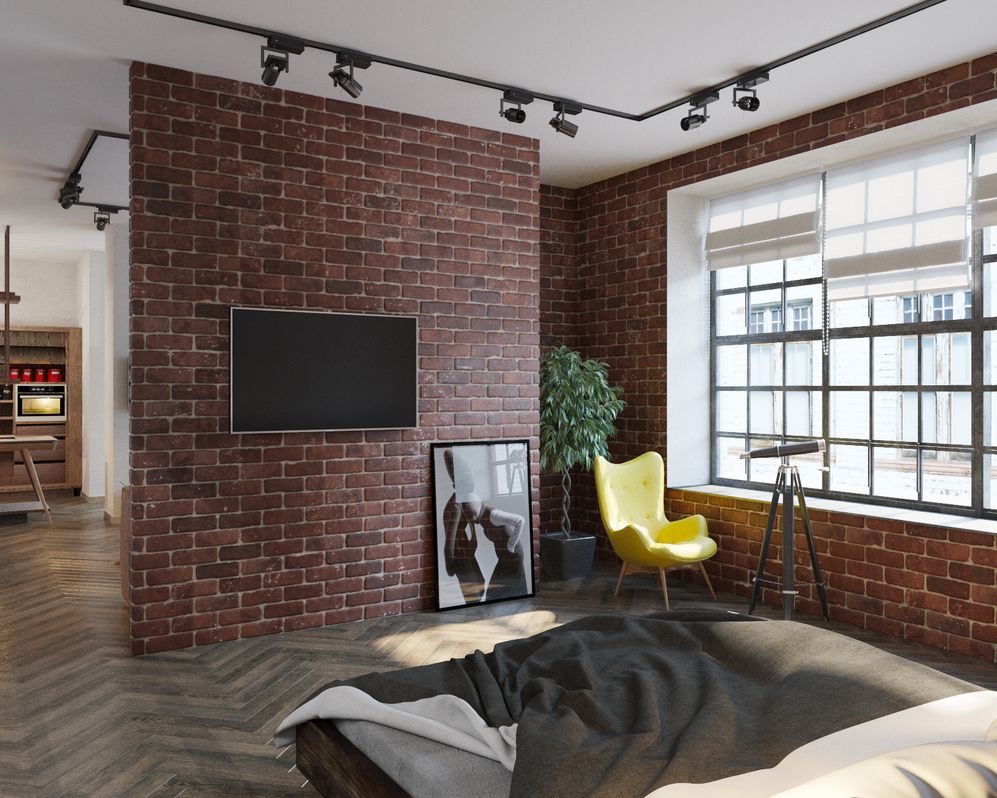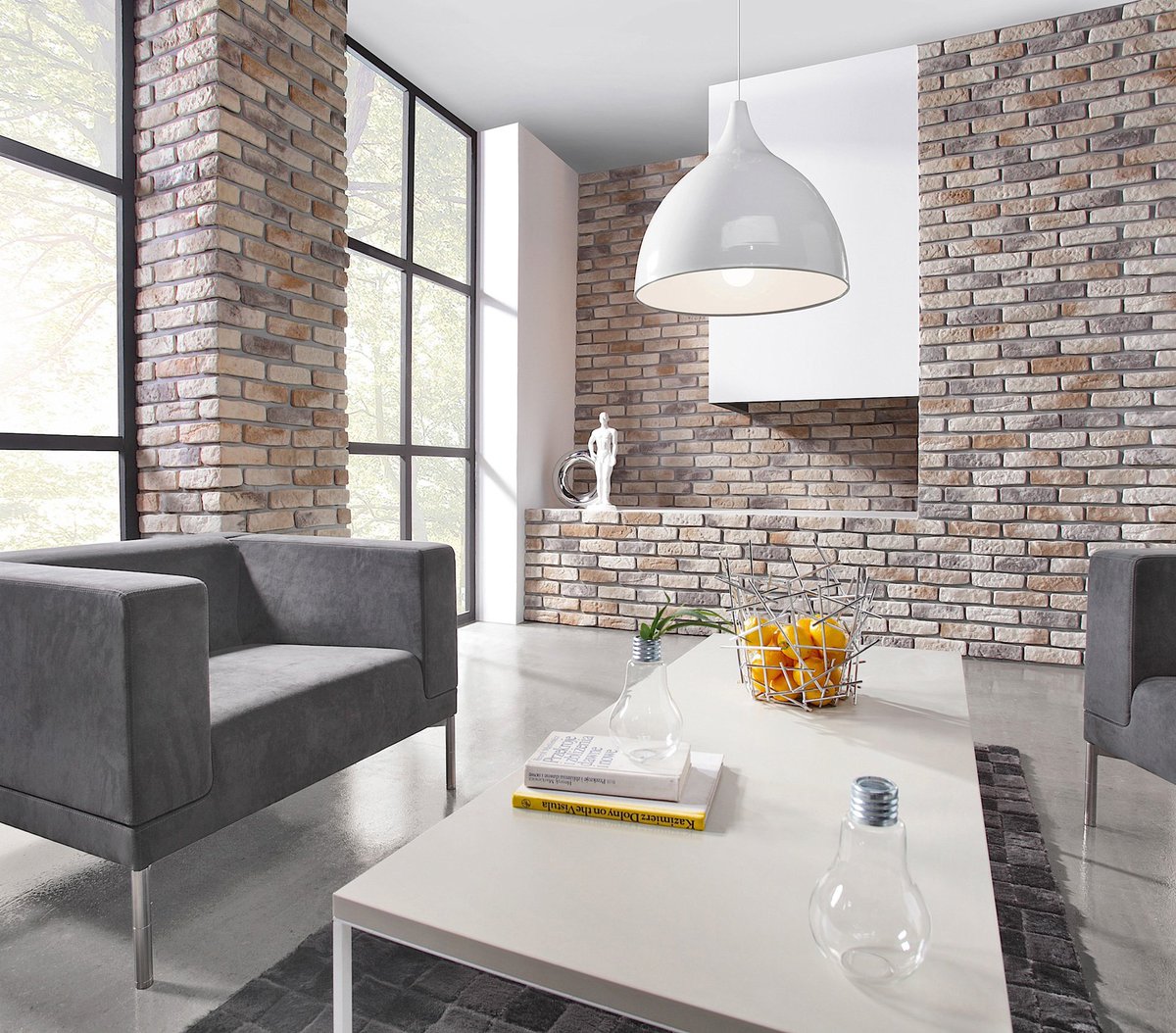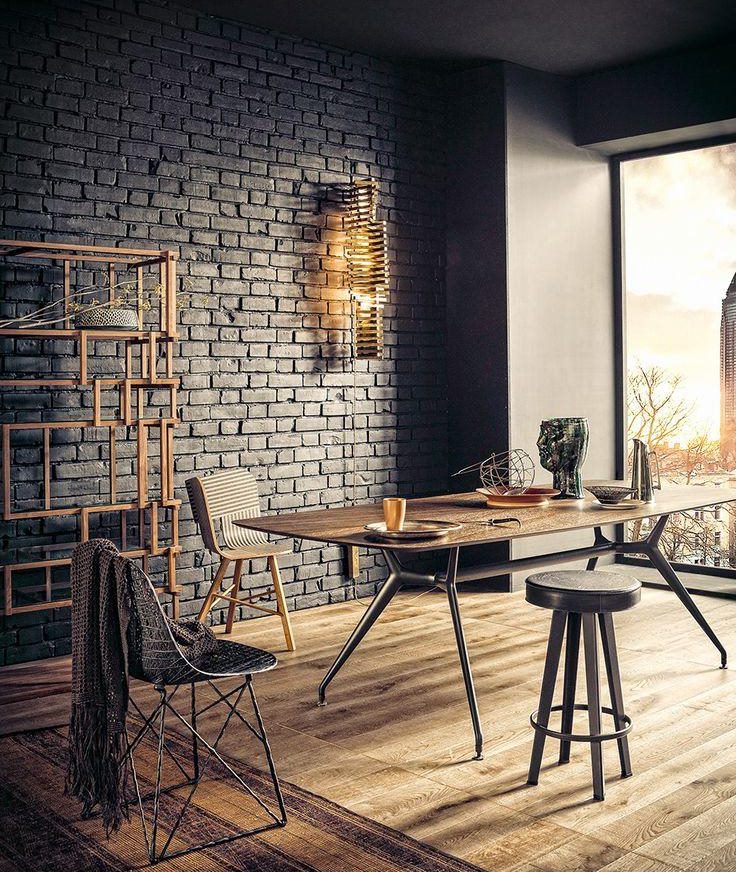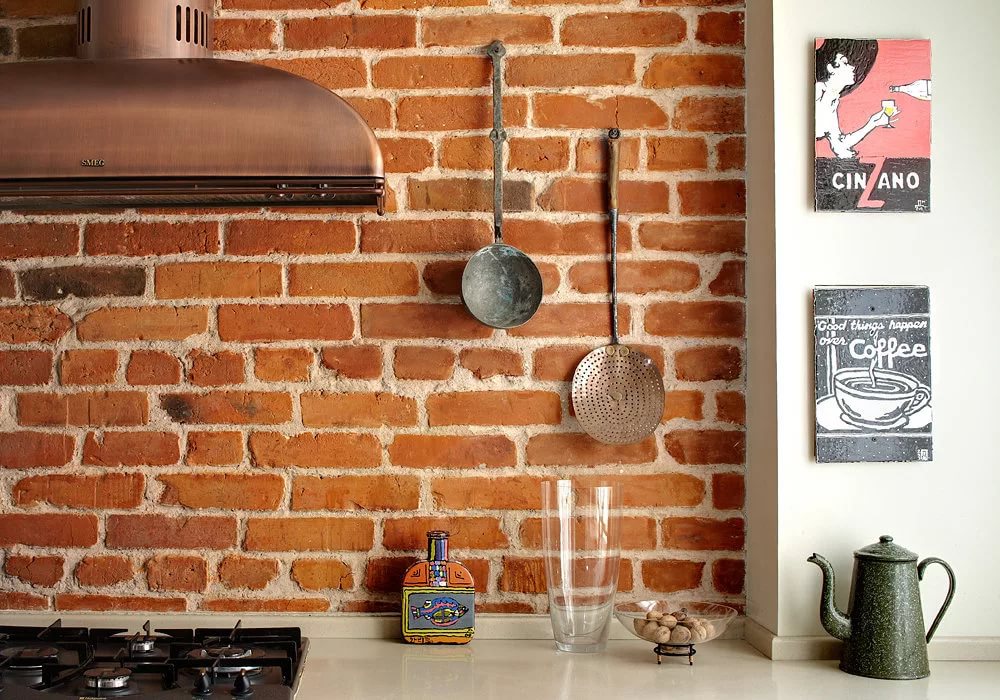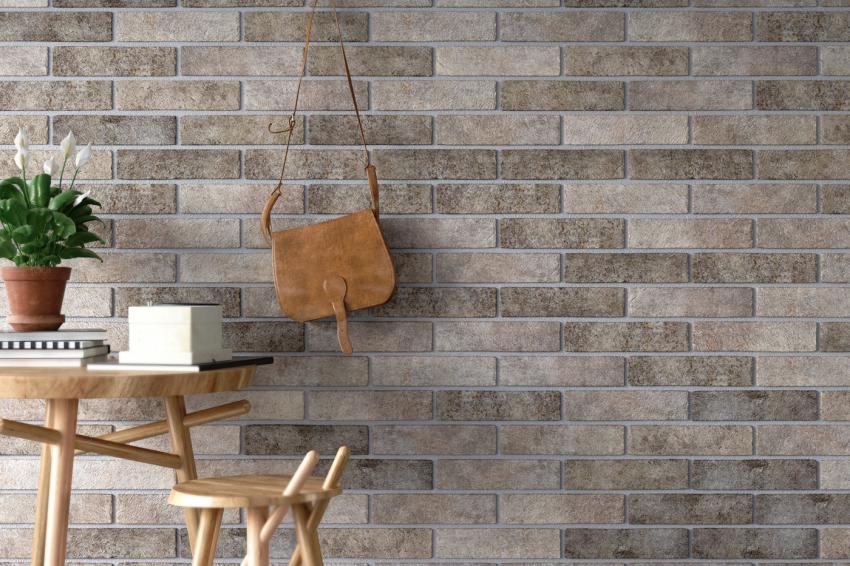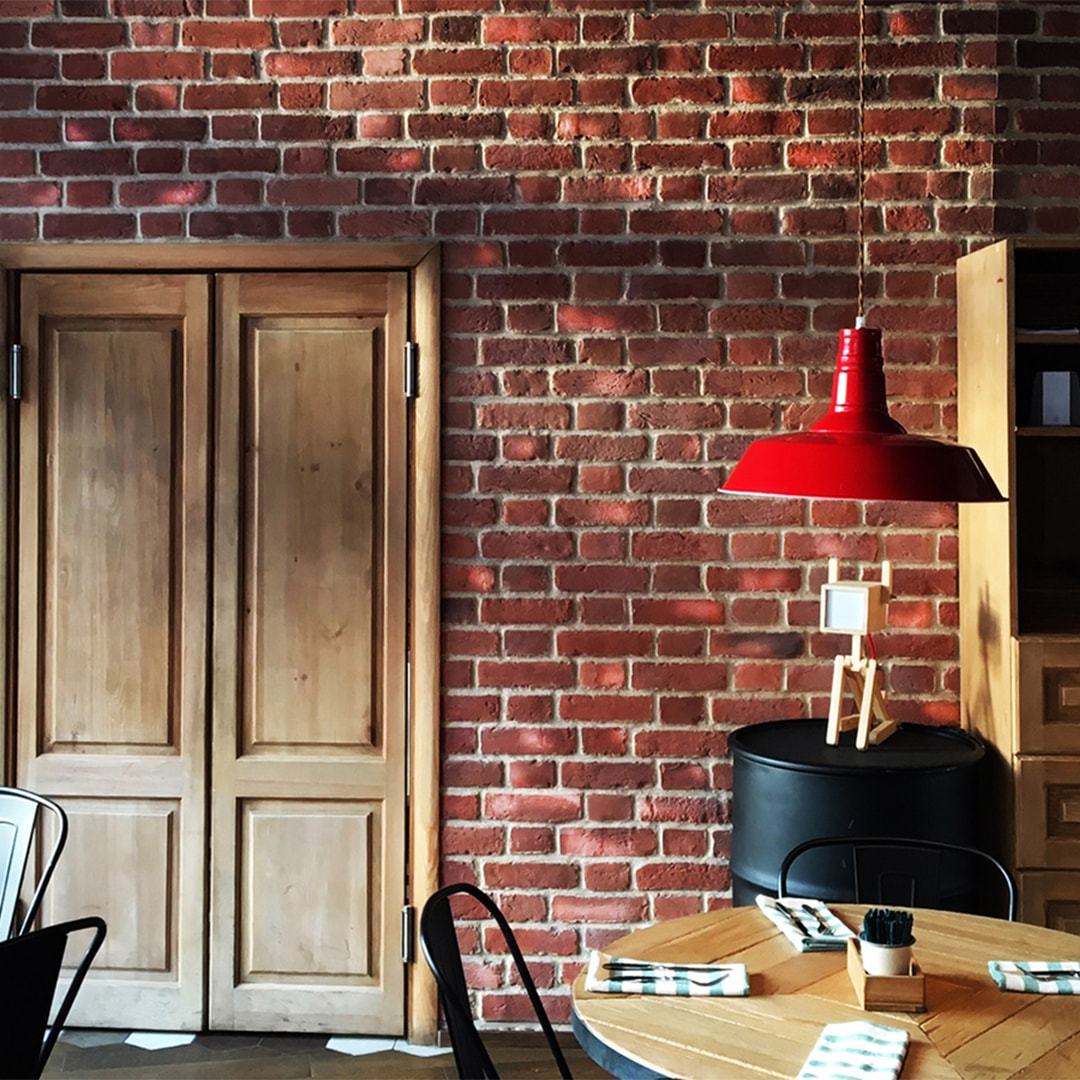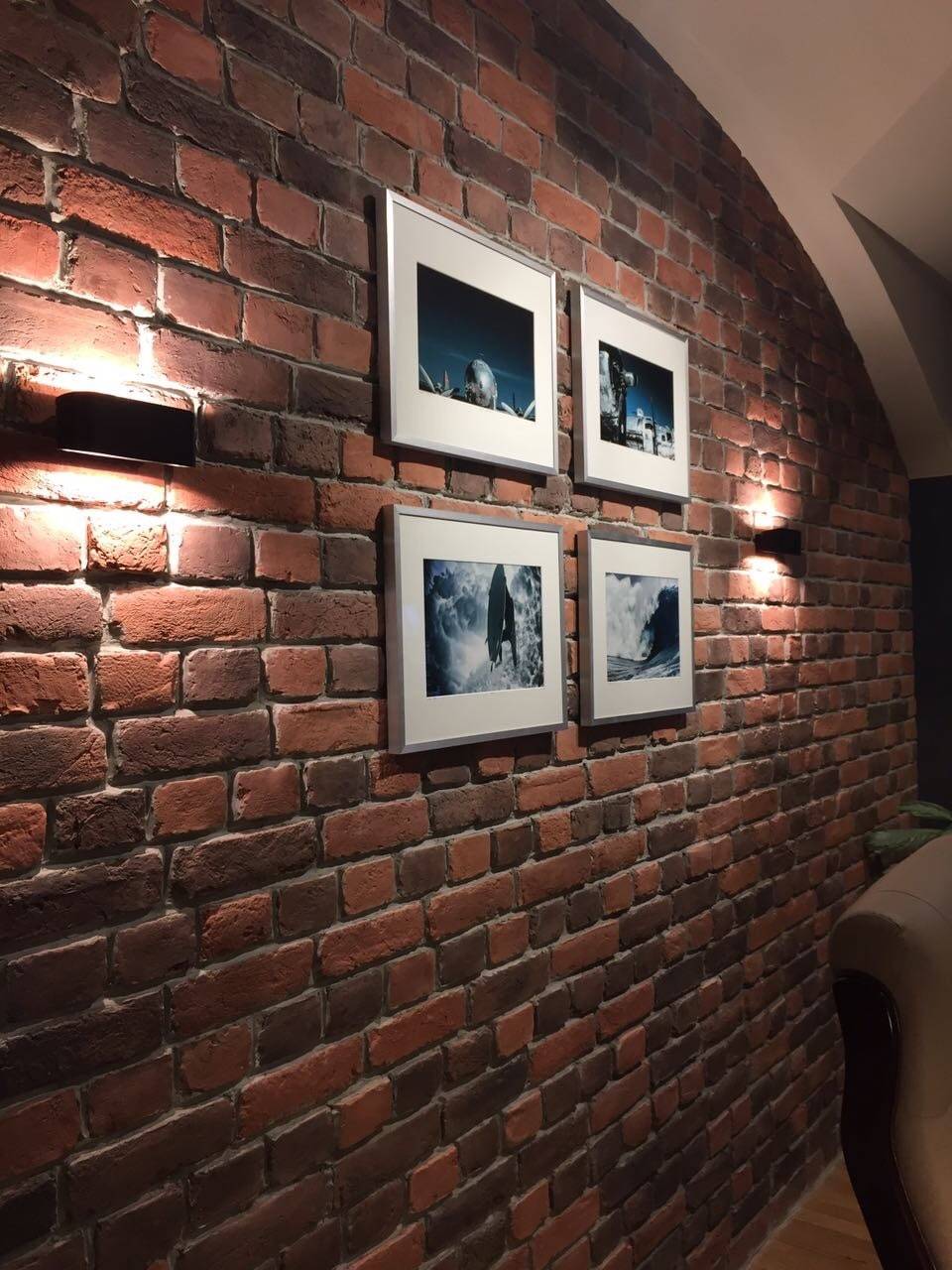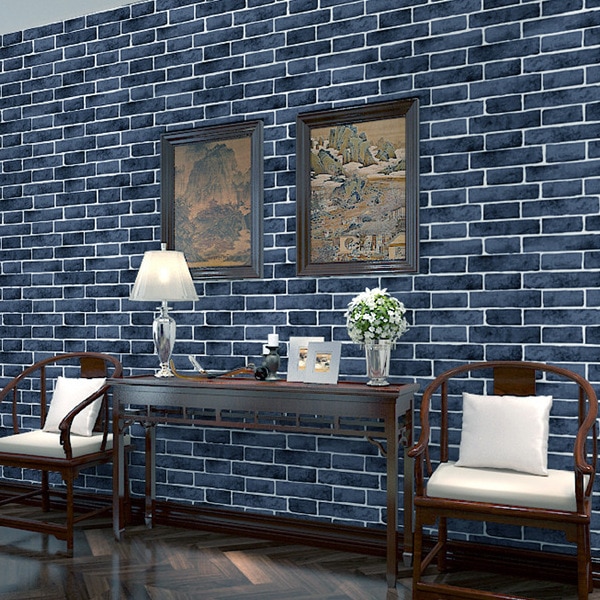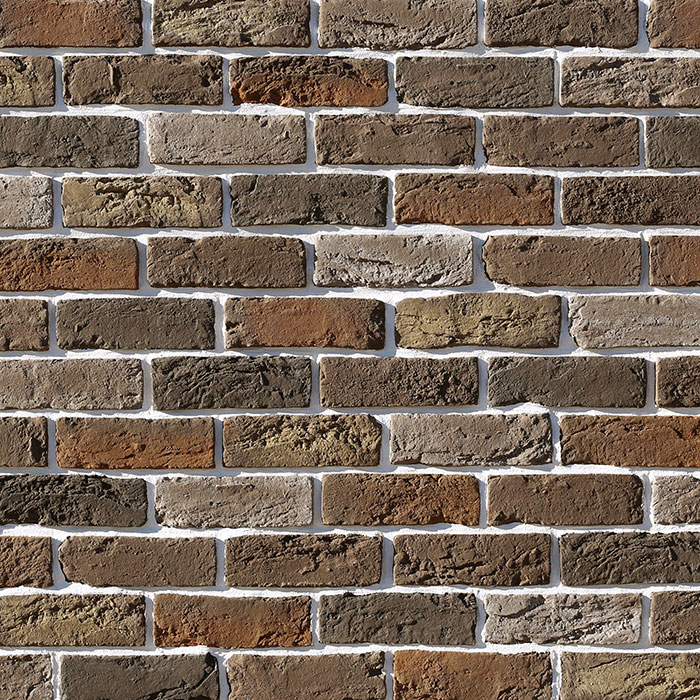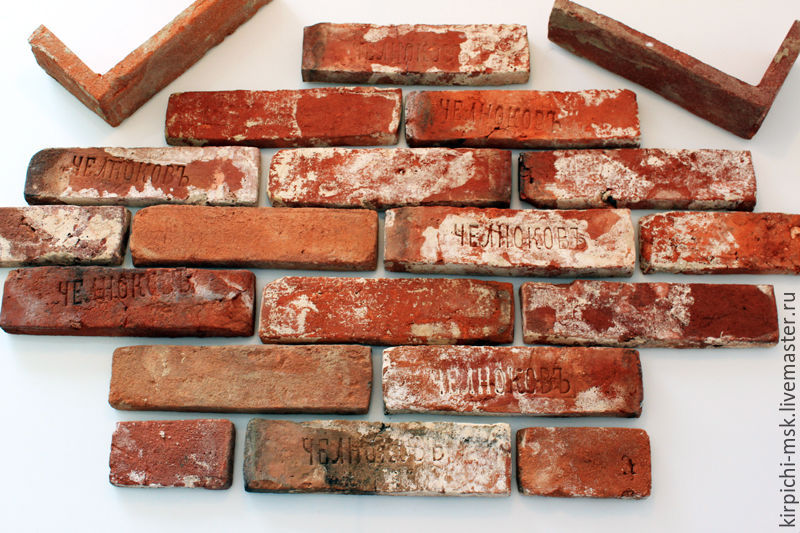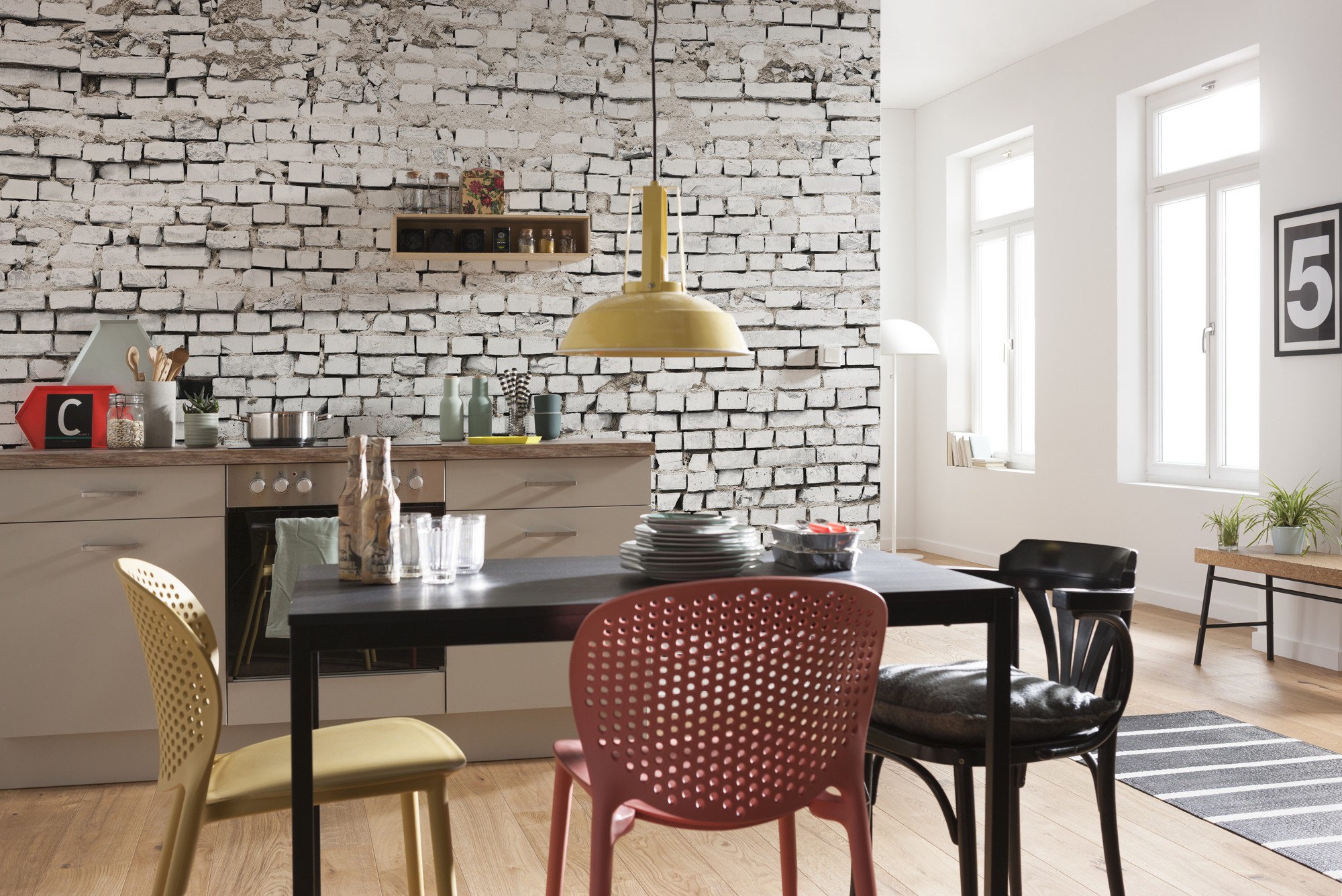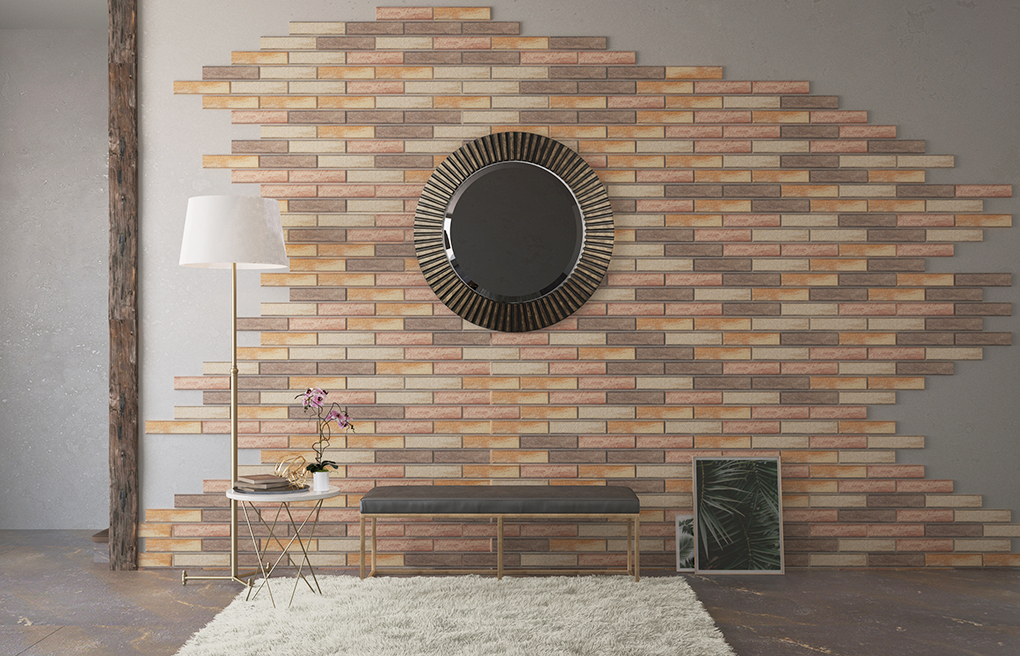About the size of facing bricks
The most commonly used bricks are single size. Their long part is 25 cm in size, and the other two sizes are 12 and 6.5 cm. One and a half bricks are thicker - instead of 6.5 centimeters, this parameter is 8.8 cm for them. There are also double products in which the thickness reaches 13.8 cm. These are all domestic measurements.
If we talk about European standards, then they mainly use bricks of slightly different dimensions: 24 cm long, 11.5 cm wide and 7.1 cm thick.
For Americans, too, everything is in its own way: 25 by 6 by 6.5 cm. Or 24 by 6 by 7.1 cm (the latter option refers to clinker, it is often made in Europe using NF - German standards).
Varieties of facing bricks
Depending on the material and production method, there are several types of decorative bricks:
-
Clinker. The composition contains high quality clay and is a natural imitation of brick, only more accurate and thinner. It is characterized by high resistance to mechanical stress and temperature fluctuations.
-
Plaster. An affordable budget option that is easy to make yourself. Initially, it has a white color, but it is easily stained - during the manufacturing process or after installation. The surface can be either smooth or corrugated. An environmentally friendly product that is ideal for indoor furnishing. Its only inherent drawback is the fragility of the texture.
-
Ceramic. In terms of its external and physical properties, such a decorative brick in many ways resembles a tile made of ceramic material. It is very robust, shock and moisture resistant.
-
Porcelain stoneware. Differs in the greatest strength and durability. It is made under production conditions from gypsum mortar with the addition of granite chips by kneading, double firing at very high temperatures. The main advantages of decorative bricks made of porcelain stoneware are moisture and frost resistance, resistance to dirt, a wide variety of colors and shapes, as well as a maximum service life of 30-40 years.
What are we going to make bricks from?
There is a large selection of materials for decorative masonry (or its imitation). Differing in appearance, texture, price segment, they will be able to satisfy any consumer demand.
-
Natural brick. This is a classic of the genre. Sometimes it is enough to use an already existing white brick wall without covering it with additional trim. Wanting to use it as a decorative element, the work will be reduced to a primer and a transparent acrylic varnish coating. If you are not satisfied with the color, use painting.
-
Facing colored or white decorative brick. Simplified version. Its advantage over its “big brother” is that it is thinner and lighter, and requires less space. When laying, use tile adhesive (or glue for stone) + grout for joints. It is used in living rooms: living room, bedroom.
You can lay such a stone on tile glue.
-
Clinker tiles for colored or white bricks. It practically does not take up space in the interior. A rich selection of textures, shapes, sizes and colors. The base is tiled according to the principle of ordinary tiles, observing the seams. Due to its moisture and heat resistance, it is ideal for the kitchen.
-
Textured wallpaper imitating colored or white brick. They are so believable that the substitution is not noticed immediately, but upon closer examination. They look great both in small rooms (saving space) and in spacious rooms.Such wallpapers have a good wear resistance class and can withstand wet cleaning.
-
Textured imitation of a brick surface using a putty mixture. For this decoration, a 50:50 starting putty / tile adhesive is used. Affordable budget option (like wallpaper). Imitation decoration in the interior is performed in several ways:
Brick imitation can be made from ordinary putty
-
drawing a masonry joint on fresh plaster that retains the shape and size of the brick;
-
application of plaster / putty mortar through a stencil imitating a brick texture;
-
having previously glued the plane with masking tape (tape) along the lines of the masonry joints, putty is applied to the marked area (with a continuous layer of the required thickness); tape (tape) is removed along with part of the mortar, exposing the natural masonry seam and creating a natural look of brick imitation.
When choosing a material for decoration, the main criterion (after aesthetic and financial) is its functional purpose for a certain type of room. So, in a small hallway, textured wallpaper with imitation is best suited, and as a kitchen apron - easily washable white clinker tiles.
 For different rooms, you need to select the material individually
For different rooms, you need to select the material individually
Self-production of decorative elements
Artificial bricks and stones do not have to be bought ready-made, you can make them yourself. A little building skills, creativity and a minimum supply of materials and tools will help create unique decor elements.
For the "home" production of decorative bricks you will need:
- acrylic gypsum plaster;
- shape, suitable size and configuration;
- color for water-based paints;
- acrylic glue;
- transparent varnish;
- medium-sized spatula and bowl for mixing plaster.
If it is not possible to purchase a ready-made form or in an effort to save a budget, you can easily make it yourself. The simplest option would be a simple cardboard box or plastic container that will be used to fill the solution. To create small finishing elements, silicone baking dishes, food packaging and more are often used, depending on your imagination and capabilities. The advantage of self-production of plaster decor is the absolute freedom to choose the color scheme, because the color and shade of the future brick is determined by the amount of color you have chosen to add to the mixture. For a start, it is better to use white brick in the interior, because you can change its color at any time - it is enough to paint the "masonry" with an ordinary water-based emulsion. As for the size, here, too, the dimensions of individual elements are not limited - whether you need massive-looking "cobblestones", neat, thin bricks or geometric mosaic elements - it is in your power to create a brick of any size.

Thanks to the presence of such decorative material as artificial brick, interior design solutions have unlimited possibilities. You can transform the room by adding new details to it or radically change the style by introducing artificial brick masonry into the interior.
In what interior styles is brickwork preferred?
Living room project in black
This popular element is found in different styles of interior, if desired, the brick can be correctly fitted into almost any room. The type of masonry, color, shape and texture can be different, and it depends on how the brick wall will look in its finished form.
Modern studio apartment with bright accents in the interior
Now, we will consider only those options in which brick is almost always found in interior decoration.
Loft style brick
On a note! Today the Loft style is one of the most fashionable and demanded styles in interior design.
An unexpected solution for decorating a loft-style apartment in white
Modern and comfortable furniture set against rough walls makes this design unique
Design project of a stylish and beautiful interior
Particular enthusiasts buy antique bricks with the manufacturer's hallmark to decorate their rooms. It costs a lot, but it looks really stylish.
Such a brick was once made by hand and it had a rich palette of colors, due to the fact that different materials were used for its manufacture.
Concrete ceiling and brickwork wall decoration in a modern loft apartment
A brick wall in the loft style is always organic, the same can be a partition, lined with half brick, which neatly divides the room into zones.
Country style brick
Rustic styles are always very popular and they never cease to be fashionable, because most citizens associate this with real home comfort. Natural and natural materials, handicrafts, embroidery, ceramics, hand-knitted rugs - all this looks great against a brick wall.
Huge wicker chandeliers highlight the chosen style
In Provence, brick inserts in the walls, especially in a small kitchen, are almost mandatory. Often in rural styles, bricks are painted milky white, light beige or ocher.
It is not customary to focus on such a wall, as in a loft, it is not the main one, rather a background one, but nevertheless, it is present
Open shelves against brickwork - simple and tasteful
Traditional provincial-style kitchen interior is not complete without natural materials.
On a note! Compositions of fresh flowers, ceramic plates, framed landscapes, small wooden shelves on which dishes and ceramic figures are placed are hung on brick walls in rural styles.
Scandinavian style brick
The restrained and laconic style of the inhabitants of the Scandinavian countries has firmly entered our homes. Lovers of free space and freshness, but nevertheless, soft comfort are its adherents.
Scandinavian comfort and a complete sense of freedom in the interior
Bright decorative elements are essential in any room
Unobtrusive simplicity and modesty of the Scandinavian style
A wall of brickwork a highlight in a snow-white bedroom
Cozy place to relax under the window on the attic floor
On a note! A painted brick wall is acceptable in Mediterranean and contemporary styles, in neoclassical, English and Gothic styles.
Brick color in interior design
The surface of the brickwork, as a rule, is processed in order to remove excessive porosity, facilitate cleaning and also harmoniously fit it into the style of the room. If it is necessary to leave natural masonry, it is covered with transparent compounds. But more often brick walls are painted, choosing the most suitable color in each case. Nothing stands in the way of making the brickwork green, purple or pink, but the traditional "brick" colors are most commonly used.
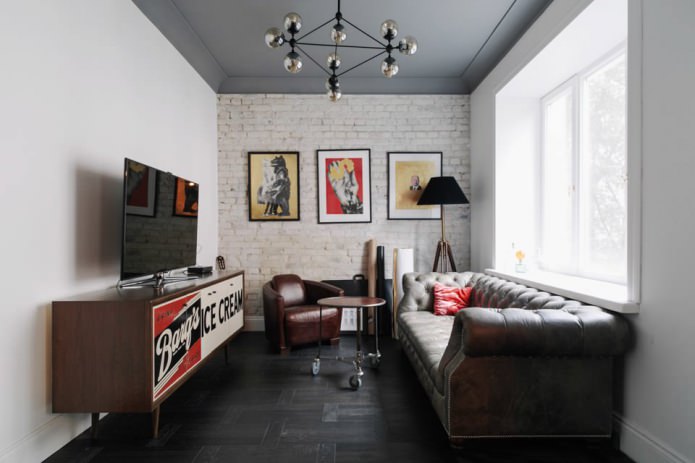
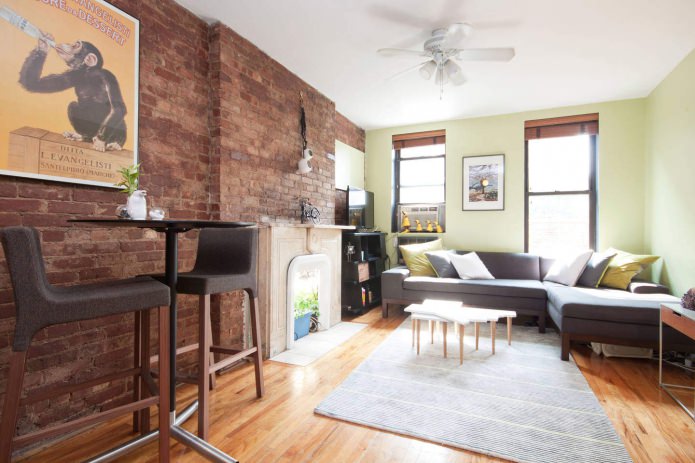

The photo shows a partially white painted brick in the design of a small studio of 22 sq. m.
White brick in the interior
White is the color most often used in minimalism, Scandinavian styles. In both of these styles, brick surfaces are the element that allows you to enrich the interior with minimal means - its texture. At the same time, they try to remove the color so as not to overload the visual perception. An excellent solution in such cases is to paint the finished masonry white.
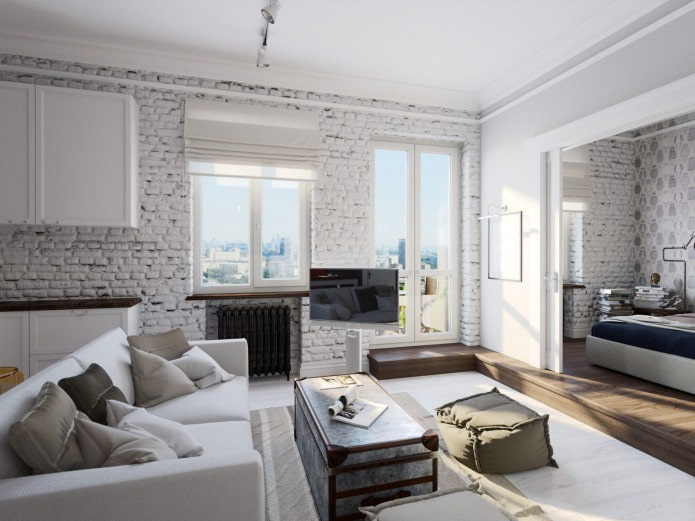

In the photo there are walls made of white painted bricks. Project from Aiya Lisova Design “Loft design studio 42 sq. m. "
White additionally gives the effect of increasing the space, which is important for those cases when the area of the room is small. In addition, a white brick wall can serve as an excellent background for demonstrating decorative elements of the situation on it.
White brick wall can be combined in the same room with "traditional" masonry.



Gray brick in the interior
Gray, like white, is considered neutral. It creates a calm backdrop for displaying furniture and decorative design elements. Depending on the saturation, gray can play a different role in a room.

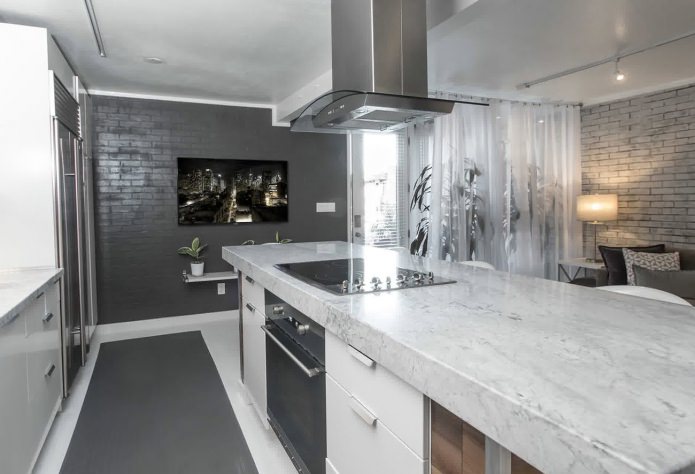
Light gray will expand the space and slightly dim the brightness; it is appropriate to paint brickwork in rooms that are too brightly lit in this color. Dark gray will add chamberness and intimacy, create a soothing atmosphere, although it will visually conceal the volume.

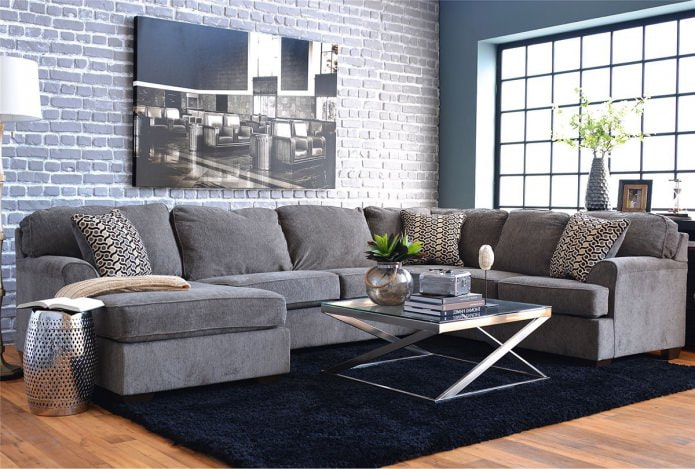
Red brick in the interior
As a rule, "red" refers to the shades of ordinary bricks made from clay. Although nothing prevents to paint the masonry red, if the design idea requires it. Red brick walls are appropriate for almost all styles, including Gothic and Classics.
As a rule, they immediately attract attention and become the main decorative element of the interior.

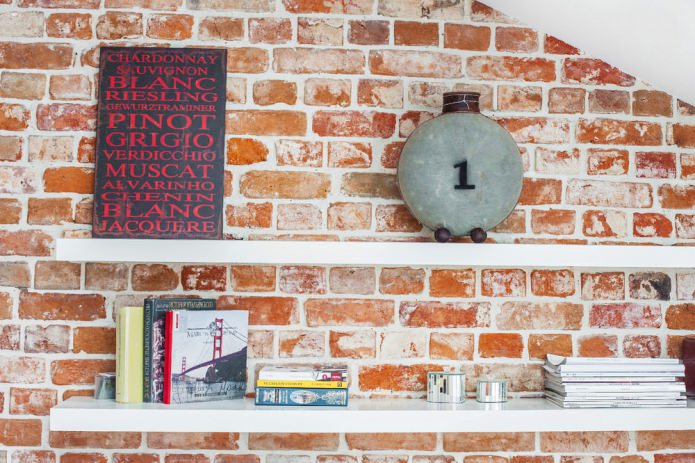
In the photo there is a red brick in the interior of a loft-style attic studio.
Red brick walls no longer need additional decorations. It should be borne in mind that some pieces of furniture can be "lost" against their background, for example, a table of a simple shape made of wood similar in tone can be practically invisible.
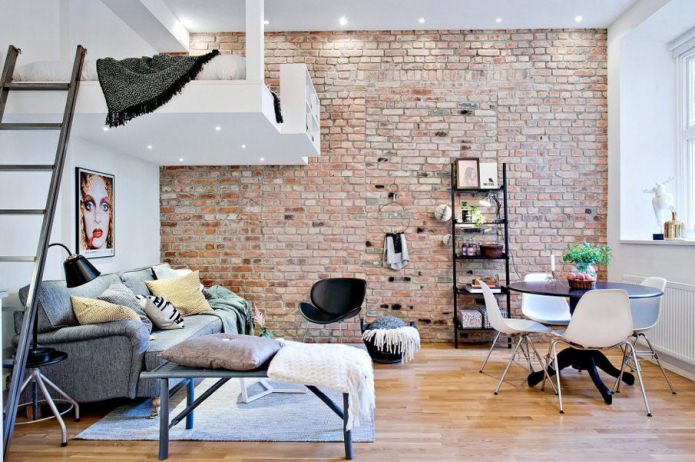

Suitable styles
Decorative brick, no matter what material it is made of, is suitable only for certain decoration styles. It is often used to decorate loft-style rooms. This is almost ideal in this case: it’s hard to find a better way to mimic an old-fashioned brick wall. If everything is done correctly, it seems that it is not modern housing around, but a building built at least in the first half of the twentieth century (if not earlier)
It is important to understand that even the most elaborate loft is visually aggressive and can tire over time.

Therefore, the design must be diluted:
- floor rugs in rich colors;
- flower arrangements;
- expressive upholstered furniture.

Do not assume that decorative bricks are only suitable for loft-style houses. Where the owners prefer country or its various semi-antique versions, this material can also be used. In this case, use the lightest brick possible, trying to lay it as beautifully as possible. This is not surprising, because the concept is also different - now the premises are made out not as an "old factory or warehouse", but as a cozy rural house.

To enhance this impression, solid dark natural wood beams can be used. But it is not recommended to introduce any artificial details into the composition, they will immediately disrupt the integrity of the country interior. A similar style can be used for a kitchen backsplash and for walls in individual rooms. The use of decorative bricks is also appropriate in high-tech style. But the approach, of course, should be different.

Decorative bricks can also be used in the English style. Here, rough, emphatically rural material will not work. It is necessary to use carefully executed blocks that will perfectly combine with natural wood. The English room is done in a single color scheme. This circumstance must be taken into account even when choosing decorative elements for framing a fireplace.

Gothic Middle Ages in a single apartment
To create the atmosphere of a medieval castle, we will need the same aged brick, only the traces of "fire" should be discarded. The brick wall in the interior, painted in dark gray, looks brutal.A layer of paint is applied thickly so that it fills the seams unevenly.

Brick wall in the interior, painted gray. Photo
In addition to the walls, columns and semi-columns, pointed arches are trimmed with bricks. This finish is suitable for any room, from the kitchen to the bedroom. In high rooms (dining room or kitchen), vaulted ceilings can be tiled with brick tiles. This will create the illusion of an old wine cellar. By the way, it is easy to arrange cells for storing bottles in the walls.
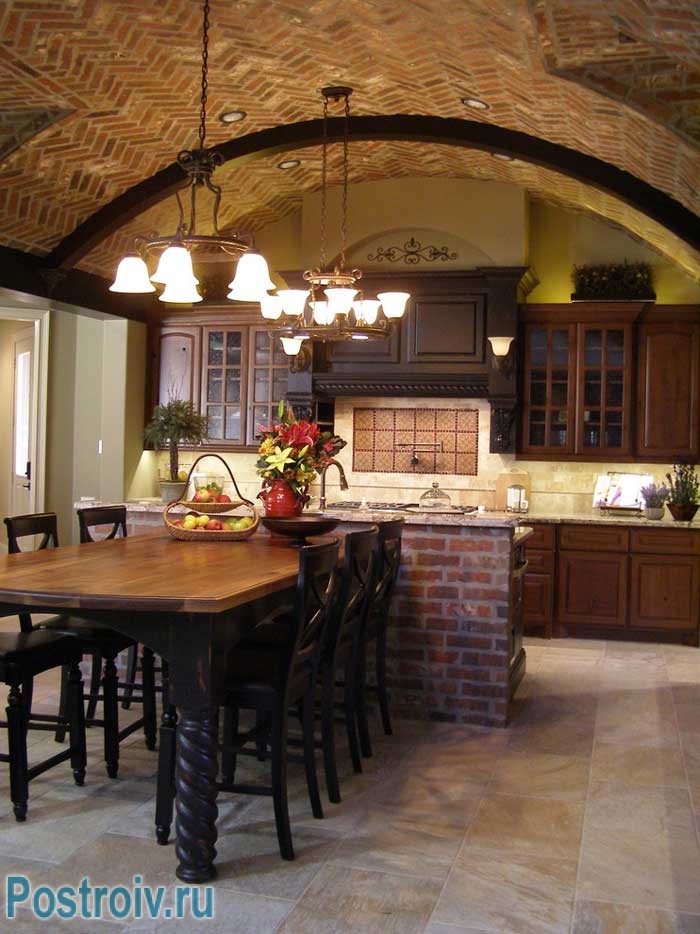
Vaulted ceiling with decorative bricks. Photo

Vaulted ceiling in the kitchen, finished with decorative bricks. Photo
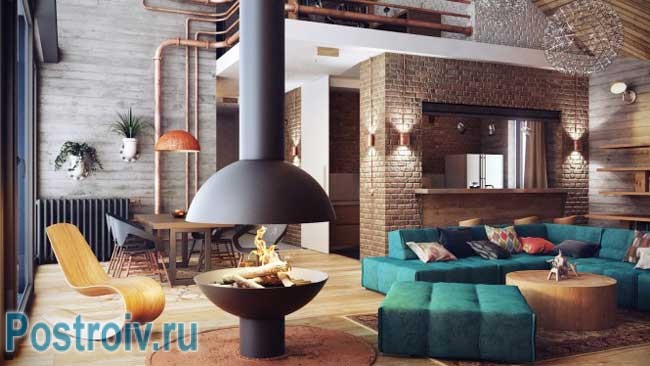
Decorative brick in the interior of the living room. Photo
The Gothic style is a combination of rough brick with luxurious furniture, decorated with elaborate carvings and artistic forging. Huge chandeliers and massive candelabra will enhance the effect. Portraits of ancestors and heavy dark curtains complete the creation of a medieval tale.
Design options
Wall decoration with white bricks is a great solution for many interior styles. Thanks to this design, you can make the atmosphere fresh, lighter and more interesting. Let us consider in more detail, in which ensembles of styles, white brickwork will look especially attractive and organic.

Loft
In interiors of this "attic" style, brickwork is used most often. It can be not only white, but also gray, red, brown or any other attractive shade. Interiors in this vein are very popular today. They are characterized by open communications (for example, pipes), combinations of furniture designed in different styles, the presence of natural and poorly processed materials. For example, against the background of white brickwork in the interior of the loft, both "shabby" wooden tables and chairs can be located, as well as expensive leather sofas combined into a single tandem.
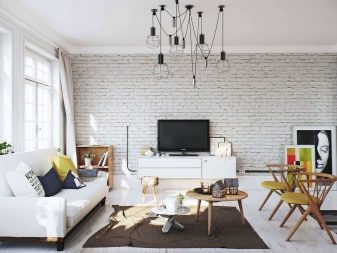

Country
This is another popular style in which brick walls look harmonious. Moreover, it is permissible to carry out the interior in a similar vein both in a private house or dacha, and in an ordinary city apartment. Against the background of brick trim in such an environment, pieces of furniture made of natural and poorly processed wood will look spectacular. Elements with ethnic notes can be used as decorations. In a single ensemble, such components allow you to form a very cozy and "warm" interior, which you will not want to leave.
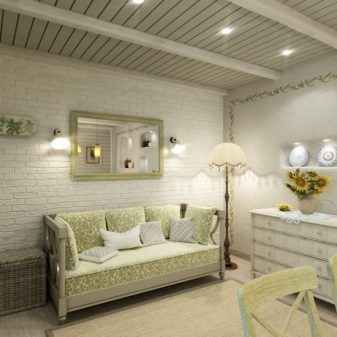

Gothic
Brickwork looks great in Gothic-style interiors. In such environments, it is recommended that only natural stones of the highest quality be installed. Usually only one wall in the room or part of the wall is finished in this way. It is permissible to complement columns and arched bases with decorative bricks.
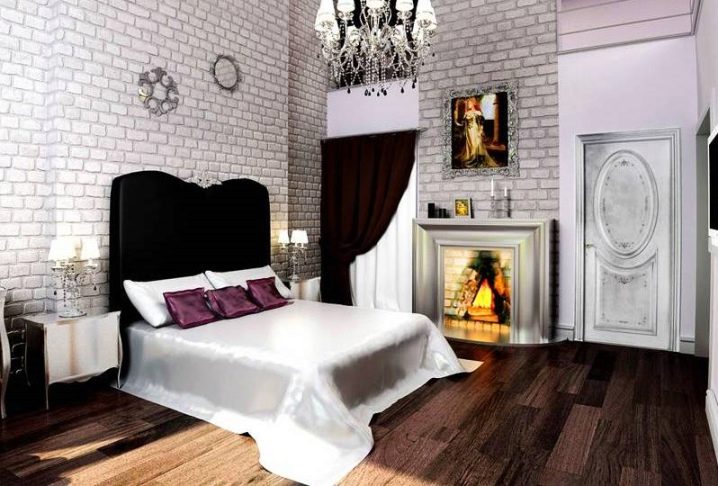
Minimalism
Today, a restrained modern style called minimalism is insanely popular. In such an interior, brickwork looks best not only in white, but also in brown or red shades. Against the background of such coatings, furniture structures of gray, black or silver shades, as well as lighting fixtures with chrome and metal details, will look great.


DIY decorative brick: from gypsum, from drywall and foam
In order to carry out repairs in an apartment at the lowest cost, you need to consider several options for making decorative brick parts from improvised, as well as readily available materials.
The most environmentally friendly of today's inexpensive foundations, and therefore the very first one to analyze, is gypsum.
When we decided to make the tiles ourselves, we need to find a silicone mold (polyurethane) for pouring the mixture (it is also replaced with an iron mold or wooden dividers). Before creating a blank, any shape must be lubricated in order to ensure a convenient exit of the brick from the cell.
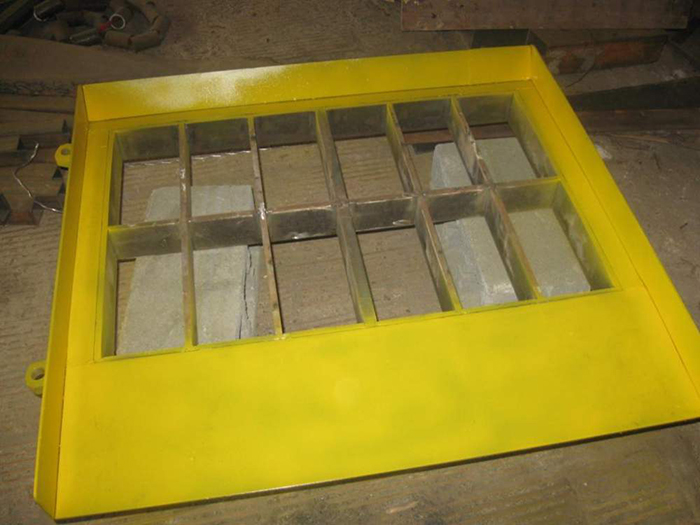 Wooden mold for blanks
Wooden mold for blanks
The shapes can be 8, 12 and 32 bricks. Choose the option that is easiest for you to work with.
 16 mesh polyurethane mold
16 mesh polyurethane mold
Next, you need to mix gypsum and hydrated lime in a ratio of 1:15.
You need to knead until the consistency of thick sour cream.
Pour the gypsum into the mold and smooth the mixture into shape with a spatula.
It is necessary to shake the form with small intermittent movements so that excess air comes out, and excess porosity and fragility does not form.
 Leveling the mixture
Leveling the mixture
After 15 minutes, take out the finished tile from the mold. Gypsum heats up when dry! Therefore, to determine whether the tiles are dry, you need to touch the workpieces, if they are cold, then they are dry.
 Ready bar
Ready bar
When mixing the mixture, you can add color or dye so as not to paint the bricks later, but immediately make them of the desired color.
Gypsum blanks are white.
It must be said separately that gypsum does not withstand strong moisture, therefore, the bricks according to the specified recipe do not need to be glued to the outside of the house or in rooms with high humidity, for example, in a bath.
 We glue the blanks on tile glue
We glue the blanks on tile glue
There are ways to make super durable gypsum blanks, but I believe that the above option is also quite suitable for decorative finishing one or two surfaces in an apartment.
Also interesting are bricks that are based on drywall.
For this we need:
- remnants of drywall,
- stationery knife,
- primer,
- putty,
- grinder.
It is generally a very simple manufacturing process. The first step is to understand what sizes you need.
Next, we take the remains of drywall and mark the required dimensions on it.
 Drywall markings
Drywall markings
Then we cut it with a clerical knife. When the required amount is ready, each brick needs to be sanded around the edges. This is necessary in order to align the edge.
 Align the edges
Align the edges
Next, each workpiece must be primed and dried.
 Primed blanks
Primed blanks
But the next step already depends on your preferences, if you need a rough brick, then you can put a little putty on the front side with a spatula to get the necessary characteristic pattern.
And, if you need a smooth brick, then we simply paint each blank with the selected color.
Agree that this option is very affordable, and if you consider that we also use the leftover material, it is very economical. Of course, such masonry should also not be exposed in the rain.
Well, even today we will "make" blanks for decorative bricks from polystyrene foam. For this we need:
- water-based paint,
- lighter,
- ruler,
- foam (thickness 2 cm),
- knife.
To begin with, we make marks on the bricks on the foam, then we cut them out with a knife.
To give them a characteristic relief, we burn each side a little with a lighter. You will get waves on the foam.
 We give relief to the workpiece
We give relief to the workpiece
Next, you can take a sheet of plywood and glue the bricks to the base with glue.
 We glue to the base
We glue to the base
After drying, we begin to paint them with water-based paint.
 Painting stage
Painting stage
The finished view of the panel in the photo.
 Finished result
Finished result
That's all, then you can attach this panel to the wall. For a budget option, all three options are suitable.
How to choose?
Even if the decorative brick matches the main style, you should not rush to stick it on the wall
It is necessary to pay attention to other characteristics of the products. Thickness and other dimensions are determined individually, but one must remember that elements that are too thick will turn out to be unnecessarily heavy
When choosing a decor for a bedroom, you need to give preference to coverings with a discreet appearance. If you violate this requirement, you can get a pretentious, too tense emotionally environment.
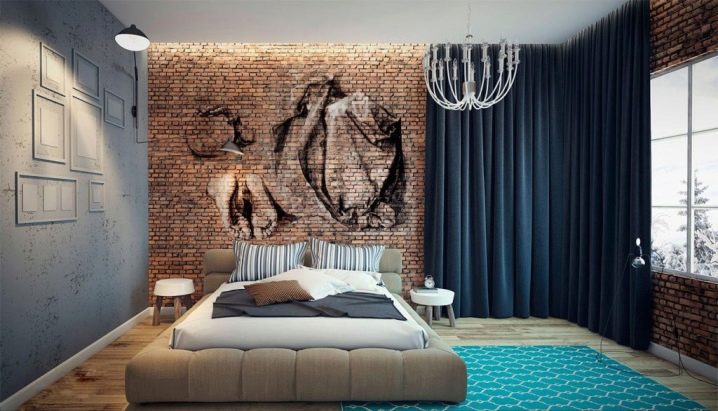
Decorative bricks intended for a kitchen backsplash must be as resistant to moisture, grease and heat as possible. Smooth blocks, the surface of which is resistant to detergents, are preferred.When you plan to use bricks to decorate compact areas around the entrance, you need to choose products that can be applied fragmentarily. Otherwise, the design becomes cumbersome and cumbersome, it looks too uncomfortable. But apart from the design characteristics. it is also necessary to take into account purely technical issues.

So, it is appropriate to use clinker where the humidity is high. It is used in the bathroom, in the kitchen, as well as in the design of facades.
Low water absorption by the coating is a very important property, thanks to which the service life of the products is very long.
There are three main surface formats:
- glazed;
- matte;
- with a pronounced relief.

Decorative gypsum bricks are not recommended for use in damp rooms. The exception is products with a special protective layer. To trim the corners, specially prepared curly parts are used. Regardless of the humidity in the room, you can use polyurethane panels that reproduce the relief of "real" bricks. These products are recommended for sanitary facilities and kitchen groups.

As for the preferred colors, the designers recommend using:
- a combination of red and brown paints;
- white and red tones (these are the most widespread shades);
- a combination of brown and sand colors;
- combining white with sand and gray tones.

Country
In country style, brick as one background wall will look perfect in the kitchen. Rooms are often decorated with brick inserts - along arches, doorways. the main feature of the country style is its lightness, ease and simplicity
And it is very important not to break this harmony with a rather heavy brick

However, if there is a place for a fireplace in the room, then the brick wall near it will add a zest to the interior. Small brick inserts will go well with an unpretentious small-floral print on wallpaper and textiles. The main companion of country style is wood. Wooden floors and rough furnishings add a real rustic feel to the interior.
Room design
In order for the design of any of the interiors to look beautiful and aesthetically pleasing, it is necessary to correctly choose the areas and shades of the product. You should purchase something that will be in harmony with the design palette and furniture items.

Living room
It is necessary to treat the design of this room very carefully, since it is in it that a variety of festive events, family gatherings and meetings of friends are most often held. Modern interiors allow the use of a brick wall accent to make the room feel more welcoming and atmospheric. Brickwork is a wonderful decorative element, so there is no need to decorate it in any way. If you still want to add something, you can put some beautiful photos or posters on the masonry. They will look harmonious and will not litter the room.
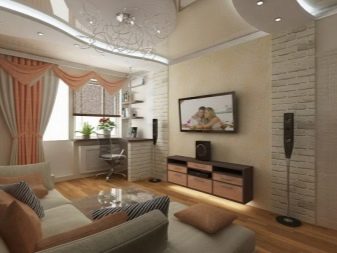
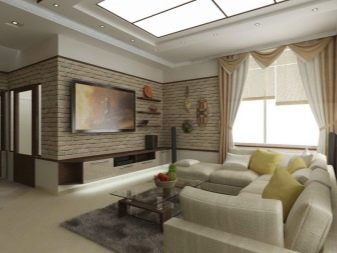


For the living room, you can choose any shade of the product
It is important that it is successfully combined with the design. Some decorate one wall, while others decorate individual areas.
Both options look decent. A fireplace or brick stove looks incredibly attractive and interesting, as well as a niche in the wall, which will create a special, pleasant and cozy atmosphere. An ideal option for a living room combined with a kitchen is a medium-sized brick wall that will help divide the zones.
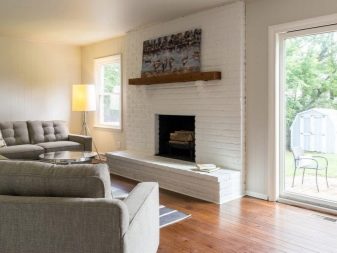
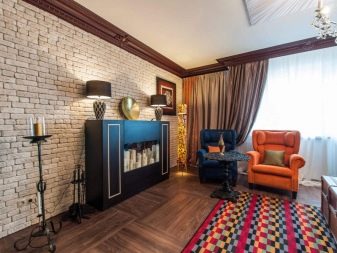


Bedroom
Brick elements in the design look extremely warm, so this element is often used when decorating a bedroom. Brick works well with a variety of facing materials. Often, it is used to decorate the wall at the head of the beds or the one on which the TV panel is located. If the room is too narrow, and the back of the bed is located against a long wall, it is this surface that is decorated with interior bricks.This allows you to make the room wider, as the wall moves away visually.
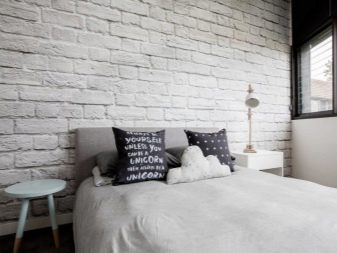



Hallway
If the corridor is small, decorating with a light decorative material, the surface of which is glossy, is suitable. This option allows you to make the room larger and more spacious. Most often, this solution is used for Scandinavian style or minimalism. You can make a fragmentary finish with a red brick by decorating the corners, areas at the joints of surfaces, zones of arches and the opening of the front door. If the room is large, masonry can help with zoning.
Kitchen
Even if the room is extremely large, you should not use too much brick in its design, as this can ruin the interior. Better to make brickwork as a link between different types of finishes. It is worthwhile to correctly determine the wall on which the material will be placed: the masonry should be on the surface on which natural light falls. If you want to use red brick, it is better to use additional lighting sources, since such elements will absorb light.
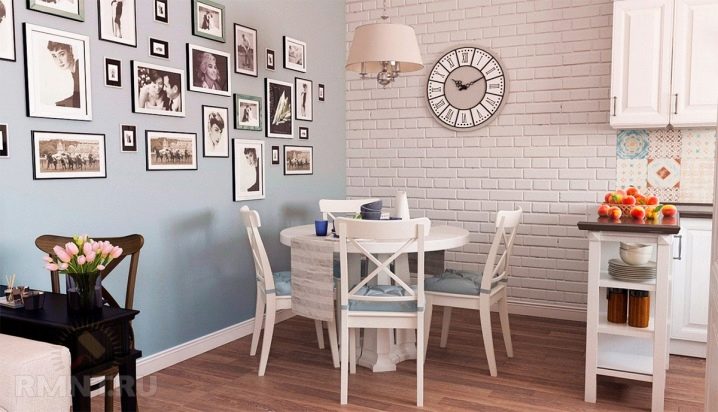
Bathroom and toilet
The microclimate in the bathroom and toilet is specific, so interior brick is not a very good option for these rooms. If it is still used, the elements should be treated with a special tool that relieves the landlord of mold. It is also better to use an antibacterial composition. The rough surface of the brickwork and the snow-white plumbing are a combination that looks extremely attractive. In most cases, surfaces are designed with plastic panels or tiles that imitate brick.

Balcony
Decorating a loggia with decorative bricks is a good idea, because it looks harmonious and beautiful. If the balcony is small, you should choose thinner elements. By means of such decoration, you can create a cozy and pleasant room for rest and relaxation. Both light and dark bricks are used. If you wish, you can arrange a place around the doorway with gray or aged bricks. Both options look very interesting and modern.
